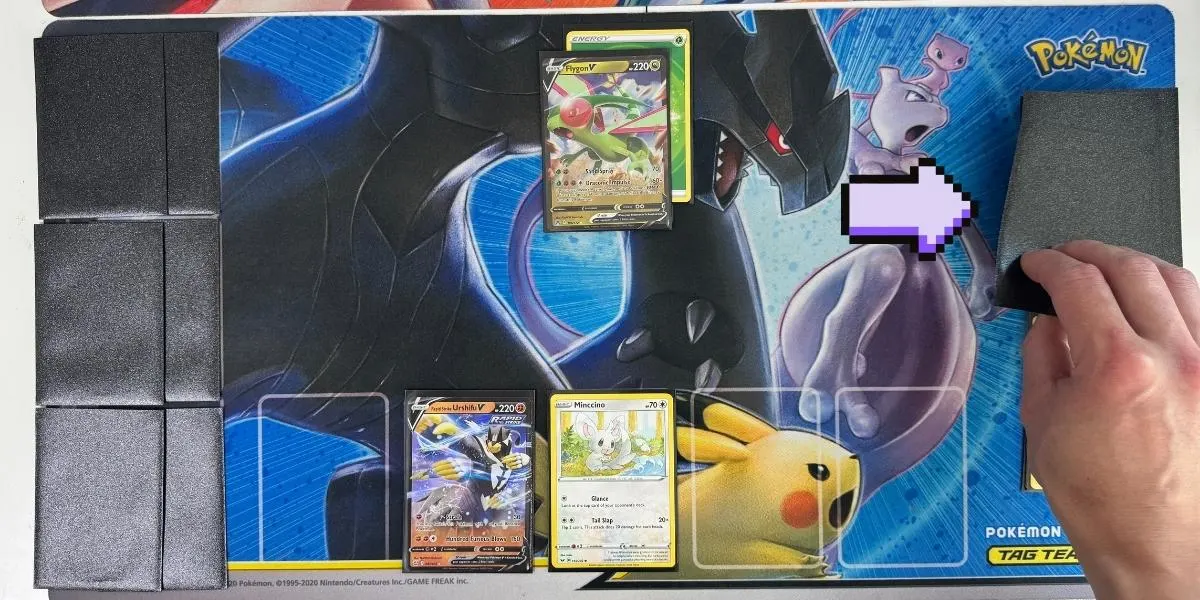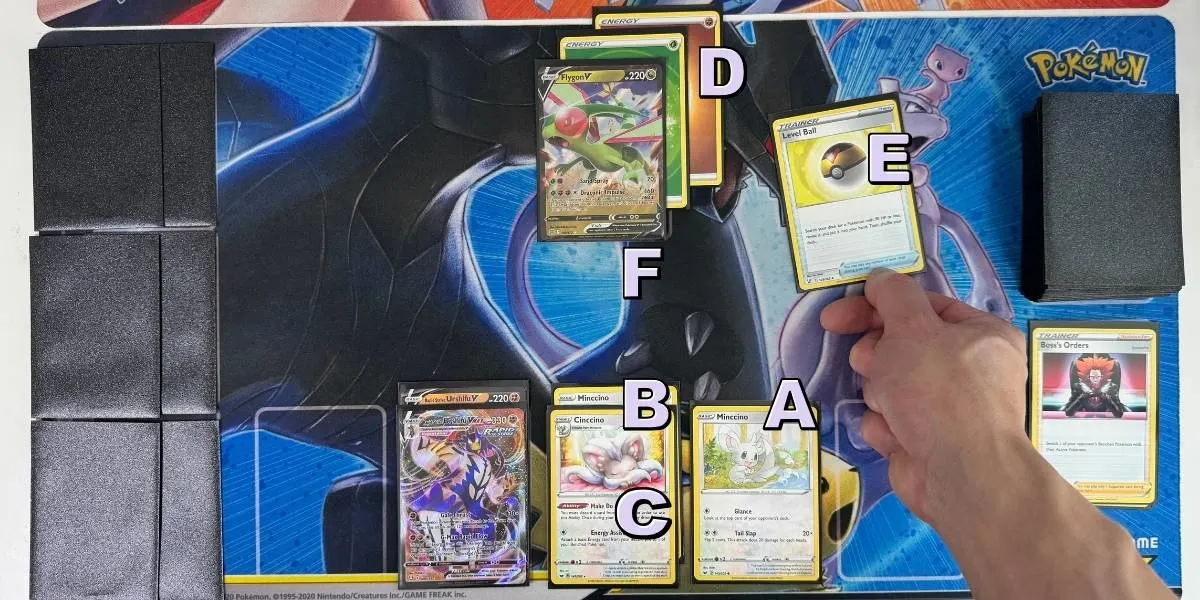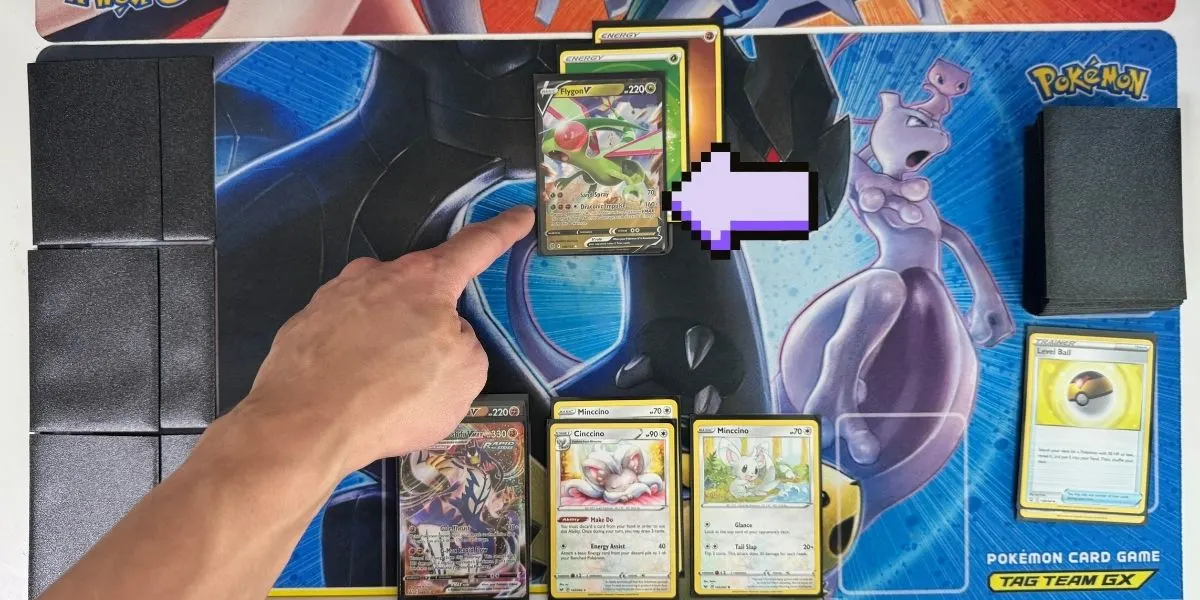Pokémon TCG turns are structured into three phases: Draw, Main, and Attack. Learn the rules for each phase to start building strategic layers into your gameplay.
A lot of people who are new to playing Pokémon cards think that the hardest part is making a deck or remembering hundreds of cards.
But the real challenge? Figuring out what the heck to do on your turn without stalling like a lost Bidoof.
Here’s the good news- every turn follows a simple three-phase structure. The bad news? There are little rules and details in each phase that can trip up even the most experienced players
This guide explains the rules for how Pokémon TCG turns work, including what happens when, what you can do, and how to take a turn like a pro.
Let’s level up.
Key Takeaways
Pokémon TCG Turn Structure

The Pokémon Rulebook keeps things simple when learning how to take a turn in Pokémon TCG. Every turn must follow three phases in strict order:
That’s it.
But the Main Phase is where most of the decision-making, resource juggling, and combo-building come alive.
Get comfortable with this flow, and you’ll start spotting new ways to outplay your opponent.
1) Draw Phase

You have to draw a card from the top of your deck at the start of every turn. No decisions to make. Just a small hit of suspense: will it be the exact Evolution you need or a dead card?
The draw is more than just luck, though. It’s a reflection of how well your deck is built.
Building a balanced deck makes “top-decking”– drawing the exact card at the right time- far more likely.
2) Main Phase

Now your turn begins to heat up. The Main Phase is where you start creating combos and building out your board.
As long as you stick to the individual action rules, you can complete the following turn actions in any order during the Main Phase:
A. Play Basic Pokémon
As long as you have space, you can play Basic Pokémon from your hand to your Bench (up to 5 Benched Pokémon can be in play). Do this as many times as you want as long as you have Basic Pokémon to play.
B. Evolve Pokémon
You may evolve a Pokémon by placing the correct Evolution card on top of a Basic or Stage 1 Pokémon that’s been in play for at least one full turn. Pokémon cannot evolve on the same turn they are played, and evolution is only permitted during your Main Phase.
C. Activate Pokémon Abilities
Certain Pokémon have unique Abilities that are useful for setting setup, draw power, disruption, and more. Some Abilities can be used multiple times per turn, whilst others can only be used once. This will always be clearly stated on the card.
D. Attach Energy
You can attach one Energy card per turn from your hand to one of your Pokémon. Energy attachments have to be made during the Main Phase and are important for powering attacks or paying retreat costs.
E. Play Trainer Cards
Trainers (Items, Supporters, Stadiums, and Tools) help you carry out your deck strategy by activating various effects like draw, search, and more. There is no limit on how many Items you use on your turn, which is why pro decks contain lots of them. However, you are only allowed to play one Supporter and one Stadium per turn.
F. Retreat Your Active Pokémon
Weakened Pokémon can be swapped out, or “Retreated” out of the Active Spot to prevent them from being knocked out. Retreating can be done once per turn by paying its Retreat Cost in Energy.
3) Attack Phase

This is the moment you’ve been working towards all along- the attack. Once you make the promise, your turn is over, so be sure to finish everything in the Main Phase first.
How attacking in Pokémon TCG works:
Your turn now ends but your opponents turn doesn’t start…yet…
What Happens After a Turn Ends?
After you’ve attacked and your turn ends, there is a mechanic that even experienced players forget. It’s called Pokémon checkup.
Checkup is a mini phase that happens in between each player’s turn, where:
Only after Checkup does your opponent start their turn.
First Turn Rules
In addition to the standard Pokémon TCG turn structure, there are also first-turn rules you need to know:
Sounds restrictive?
It’s meant to be.
Before first turn rules were introduced in 2013, going first was so overpowered because players could “Donk”- set up and take a KO on the opening turn.
If the opponent only had one Pokémon in play, the match would end before they even had a chance to set up.
These days, the first player still has an advantage- they get to establish their Bench, attach Energy, and play Items- but they can’t immediately end the game.
Taking A Turn Like A Pro
The real fun in Pokémon TCG is less about what you can do on your turn and more about when you do it.
Skilled players treat the Main Phase like a puzzle where every action matters, and the order you do them in decides whether momentum is built or the turn completely stalls out.
Here are five tips to squeeze the most value from your turn in Pokémon TCG:
1. Play Items First
Items can be used multiple times, unlike once-per-turn resources like Supporters and Energy cards, so fire them off early.
Use Items like Ultra Ball to thin your deck, improve future draws and give you more options before you commit to a Supporter or Energy attachment.
2. Time Your Supporter
Supporters are your biggest once-per-turn weapon but they need to be used wisely.
Play them too soon, and you might miss combos with a card you draw later. Wait too long, and your turn can come to a screeching halt. Always analyse your hand and board, and ask yourself: “What needs to be done immediately and which Supporters in my hand will help me do it?”.
3. Sequence Turn Actions To Combo
Pokémon TCG is about sequencing different synergistic effects to build combos.
For example: use an Item to fetch a Pokémon, then use that Pokémon’s Ability to accelerate an extra Energy. This is a simple example of sequencing, but you can still see that each action builds momentum.
Treat your turn like dominoes- the right order makes everything fall into place.
4. Prioritize Set Up On Your First Turn
Beginners love to focus on setting up their strongest Pokémon in the early game. After all, who doesn’t want to show off their super-powerful shiny Charizard?
But the skilled players do things differently- they focus on finding support Pokémon that keep the deck running like clockwork.
Most decks use some sort of engine Pokémon to help draw and search for key cards. Dig these out early so you are not left scrambling with dud turns later.
A well-prepared setup in the early game leads to smoother and more consistent turns in the mid to late game.
5. Think Ahead
The winning turn usually starts a turn (or two) earlier.
If you see a knockout coming next round, start attaching Energy to the next attacker now. That way, you’ll be ready to launch a counteroffensive.
Always play one step ahead of the board.
Conclusion
Turns in Pokémon TCG have three phases: Draw, Main, Attack.
The Main Phase is where most decisions happen, and sequencing those decisions separates casual players from seasoned pros.
Master the flow of your turns, and you’ll not only play more smoothly- you’ll set yourself up to win games before your opponent even realizes what’s happening.
FAQ
Kalam is a PTCG gameplay expert and content creator. He started playing and collecting Pokémon cards since 1996. When he’s not working, you can find him nerding out on Anime!
Ready To Master PTCG?

